系统教程20天拿下Pytorch 最近和中哥、会哥进行一个小打卡活动,20天pytorch,这是第5天。欢迎一键三连。
文章目录
- 一、张量的数据类型
- 二、张量的维度
- 三、张量的尺寸
- 四、张量和Numpy数组
- 总结
Pytorch的基本数据结构是张量Tensor。张量即多维数组。Pytorch的张量和numpy中的array很类似。
本节我们主要介绍张量的数据类型、张量的维度、张量的尺寸、张量和numpy数组等基本概念。
一、张量的数据类型
张量的数据类型和numpy.array基本一一对应,但是不支持str类型。
包括:
torch.float64(torch.double),
torch.float32(torch.float),
torch.float16,
torch.int64(torch.long),
torch.int32(torch.int),
torch.int16,
torch.int8,
torch.uint8,
torch.bool
一般神经网络建模使用的都是torch.float32类型。
import numpy as npimport torch
# 自动推断数据类型
i = torch.tensor(1);print(i,i.dtype)
x = torch.tensor(2.0);print(x,x.dtype)
b = torch.tensor(True);print(b,b.dtype)
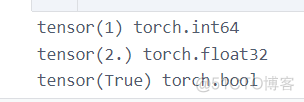
i = torch.tensor(1,dtype = torch.int32);print(i,i.dtype)
x = torch.tensor(2.0,dtype = torch.double);print(x,x.dtype)

# 使用特定类型构造函数
i = torch.IntTensor(1);print(i,i.dtype) # 单写数字 表示生成随机的整形张量的形状
x = torch.Tensor(np.array(2.0));print(x,x.dtype) #等价于torch.FloatTensor
x = torch.FloatTensor(np.array(2.0));print(x,x.dtype)
b = torch.BoolTensor(np.array([1,0,2,0])); print(b,b.dtype)
b = torch.tensor(np.array([1,0,2,0]),dtype=torch.bool);print(b,b.dtype)

i = torch.tensor(1); print(i,i.dtype)
x = i.float(); print(x,x.dtype) #调用 float方法转换成浮点类型
y = i.type(torch.float); print(y,y.dtype) #使用type函数转换成浮点类型
z = i.type_as(x);print(z,z.dtype) #使用type_as方法转换成某个Tensor相同类型

二、张量的维度
不同类型的数据可以用不同维度(dimension)的张量来表示。
标量为0维张量,向量为1维张量,矩阵为2维张量。
彩色图像有rgb三个通道,可以表示为3维张量。
视频还有时间维,可以表示为4维张量。
可以简单地总结为:有几层中括号,就是多少维的张量。
scalar = torch.tensor(True)print(scalar)
print(scalar.dim()) # 标量,0维张量 # 返回维度

print(vector)
print(vector.dim())matrix = torch.tensor([[1.0,2.0],[3.0,4.0]]) #矩阵, 2维张量
print(matrix)
print(matrix.dim())tensor3 = torch.tensor([[[1.0,2.0],[3.0,4.0]],[[5.0,6.0],[7.0,8.0]]]) # 3维张量
print(tensor3)
print(tensor3.dim())tensor4 = torch.tensor([[[[1.0,1.0],[2.0,2.0]],[[3.0,3.0],[4.0,4.0]]],
[[[5.0,5.0],[6.0,6.0]],[[7.0,7.0],[8.0,8.0]]]]) # 4维张量
print(tensor4)
print(tensor4.dim())
三、张量的尺寸
可以使用 shape属性或者 size()方法查看张量在每一维的长度.
可以使用view方法改变张量的尺寸。
如果view方法改变尺寸失败,可以使用reshape方法.
scalar = torch.tensor(True)print(scalar.size())
print(scalar.shape)

print(vector.size())
print(vector.shape)

print(matrix.size())

vector = torch.arange(0,12)
print(vector)
print(vector.shape)
matrix34 = vector.view(3,4)
print(matrix34)
print(matrix34.shape)
matrix43 = vector.view(4,-1) #-1表示该位置长度由程序自动推断
print(matrix43)
print(matrix43.shape)
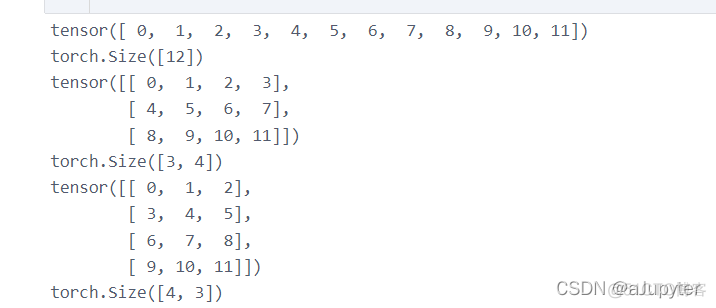
matrix26 = torch.arange(0,12).view(2,6)
print(matrix26)
print(matrix26.shape)
# 转置操作让张量存储结构扭曲
matrix62 = matrix26.t()
print(matrix62.is_contiguous())
# 直接使用view方法会失败,可以使用reshape方法
#matrix34 = matrix62.view(3,4) #error!
matrix34 = matrix62.reshape(3,4) #等价于matrix34 = matrix62.contiguous().view(3,4)
print(matrix34)
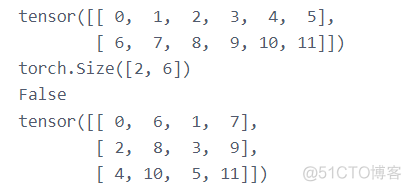
四、张量和Numpy数组
可以用numpy方法从Tensor得到numpy数组,也可以用torch.from_numpy从numpy数组得到Tensor。
这两种方法关联的Tensor和numpy数组是共享数据内存的。
如果改变其中一个,另外一个的值也会发生改变。
如果有需要,可以用张量的clone方法拷贝张量,中断这种关联。
此外,还可以使用item方法从标量张量得到对应的Python数值。
使用tolist方法从张量得到对应的Python数值列表。
arr = np.zeros(3)
tensor = torch.from_numpy(arr)
print("before add 1:")
print(arr)
print(tensor)
print("\nafter add 1:")
np.add(arr,1, out = arr) #给 arr增加1,tensor也随之改变
print(arr)
print(tensor)
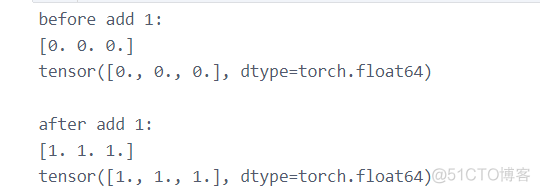
tensor = torch.zeros(3)
arr = tensor.numpy()
print("before add 1:")
print(tensor)
print(arr)
print("\nafter add 1:")
#使用带下划线的方法表示计算结果会返回给调用 张量
tensor.add_(1) #给 tensor增加1,arr也随之改变
#或: torch.add(tensor,1,out = tensor)
print(tensor)
print(arr)
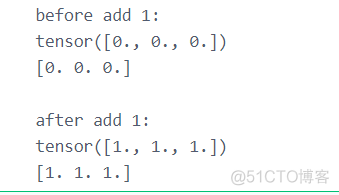
# 可以用clone() 方法拷贝张量,中断这种关联
tensor = torch.zeros(3)
#使用clone方法拷贝张量, 拷贝后的张量和原始张量内存独立
arr = tensor.clone().numpy() # 也可以使用tensor.data.numpy()
print("before add 1:")
print(tensor)
print(arr)
print("\nafter add 1:")
#使用 带下划线的方法表示计算结果会返回给调用 张量
tensor.add_(1) #给 tensor增加1,arr不再随之改变
print(tensor)
print(arr)
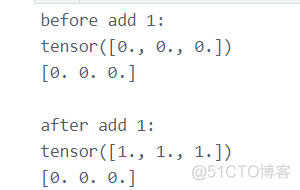
scalar = torch.tensor([[1.0]])
s = scalar.item()
print(s)
print(type(s))
tensor = torch.rand(2,2)
t = tensor.tolist()
print(t)
print(type(t))

总结
tensor.dtype类型属性 + 修改tensor.float()/tensor.type(torch.bool)/tensor.type_as(another_tensor)
tensor.dim()返回维度
tensor.size()/tensor.shape 返回形状
tensor.view(3,4)/tensor.reshape(3,4)修改形状
可以用numpy方法从Tensor得到numpy数组,也可以用torch.from_numpy从numpy数组得到Tensor。(内存共享);张量的clone方法拷贝张量
使用item方法从标量张量得到对应的Python数值。
使用tolist方法从张量得到对应的Python数值列表
使用带下划线的方法表示计算结果会返回给调用 张量 tensor.add_(1) #给 tensor增加1,arr也随之改变
#或: torch.add(tensor,1,out = tensor)
tensor.data 生成一个无梯度的tensor
